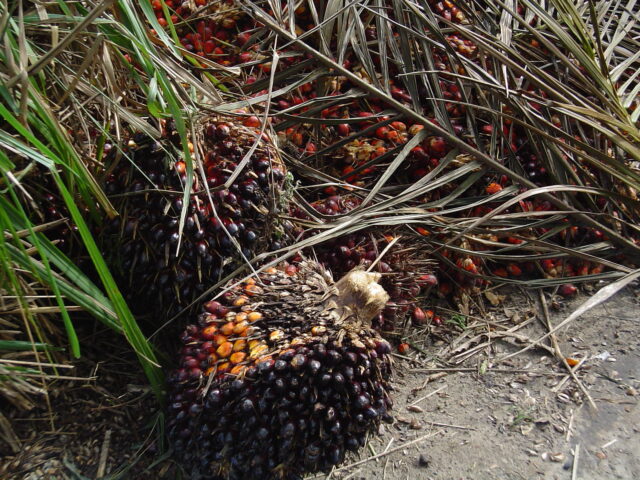Palm oil is one of the most prevalent oils. It’s used in food products like some brands of cookies, sauces, pizzas, and cosmetics such as makeup, creams, and many others.
The palm tree, which has the fruit of where the oil is extracted, grows in tropical regions like Malaysia, Indonesia, Thailand, and Colombia. Whereas its production is highly efficient, it is devastating to our planet. Some negative environmental impacts are:
Deforestation: To meet the increasing demand for palm oil, vast areas of tropical rainforests are cleared. This deforestation not only leads to the loss of critical habitats for endangered species like orangutans, tigers, and rhinos but also disrupts the entire ecosystem.
Biodiversity Loss: The monoculture nature of palm oil plantations severely limits biodiversity. These plantations replace rich, diverse rainforests with a single species, resulting in a dramatic decline in plant and animal species.
Greenhouse Gas Emissions: The clearing of forests for palm oil production often involves burning trees, a practice that releases massive amounts of carbon dioxide into the atmosphere. This contributes to global warming, making palm oil a significant driver of climate change.
Water Pollution: The production process involves the use of fertilizers and pesticides, which typically end up in local water systems, leading to pollution that harms aquatic life and local communities.
So, what can we do to help this situation?
Not buying and not using food and cosmetic products that have palm oil as one of their ingredients. Look for replacements like coconut, sunflower, or olive oil.
The time is ticking on us. Every day we witness forest fires, floods, droughts, heat-cold waves, and new diseases that are disrupting all over the globe, making our lives worse and putting them at risk. We have to be aware of our choices since they have a huge impact on the world around us. By choosing environmentally friendly products we help in combating deforestation, and climate change and take a step forward into a sustainable, better world, for us and generations to come.

Leave a Reply